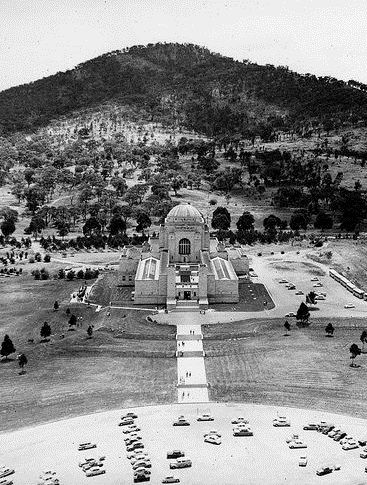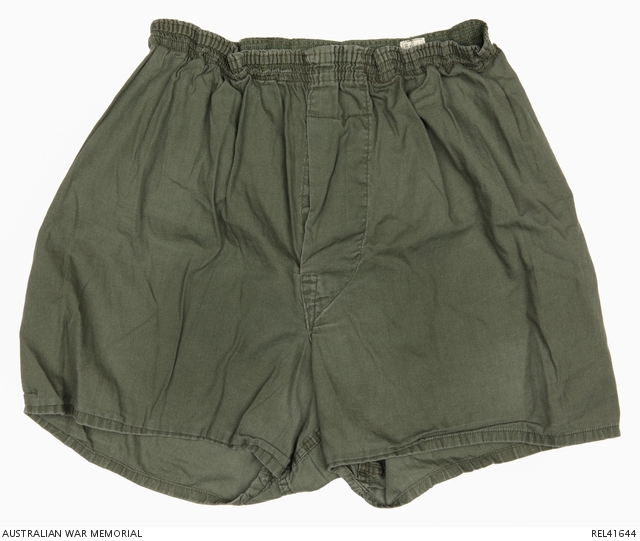Derek Abbott*
‘A personal memoir from a safe pair of hands: Steve Gower on the Australian War Memorial’, Honest History, 2 July 2019
Derek Abbott reviews The Australian War Memorial: A Century on from the Vision, by Steve Gower
Steve Gower has produced a work that is both personal memoir of his time as Director of the Australian War Memorial (AWM) from 1996 to 2012 and a continuation of Michael McKernan’s 50th anniversary history of the AWM, Here is Their Spirit, published in 1991.
 The former Governor-General, Sir William Deane, has described the Australian War Memorial as ‘the commemorative heart of the nation’ and ‘soul of the nation’. The Act under which the AWM operates describes its functions more prosaically as, to develop and maintain a national memorial to those who have died on active service, and a national collection of historical material, and a responsibility to conduct, arrange and disseminate research into Australia’s military history. The tension between the dry language of legislation and the almost religious language of Deane encapsulates the complex context in which the AWM operates.
The former Governor-General, Sir William Deane, has described the Australian War Memorial as ‘the commemorative heart of the nation’ and ‘soul of the nation’. The Act under which the AWM operates describes its functions more prosaically as, to develop and maintain a national memorial to those who have died on active service, and a national collection of historical material, and a responsibility to conduct, arrange and disseminate research into Australia’s military history. The tension between the dry language of legislation and the almost religious language of Deane encapsulates the complex context in which the AWM operates.
The Memorial is under close scrutiny in the discharge of all these functions and veterans’ organisations – whom Gower sees as key stakeholders – are always on the lookout for anything that they might consider a slight. The sacerdotal aura surrounding the commemorative function all too often colours critics’ views of the discharge of its other functions. Veterans and the families of the dead are understandably extremely sensitive to any suggestion that their experience or loss may not have served a higher purpose. A revisionist interpretation of a military action great or small, the design of a commemorative plaque or sculpture, the replacement of one exhibit by another or, God forbid, a mistake in identifying or describing an exhibit will bring down thunderbolts on the Director’s head. Where the AWM is concerned, everybody is an artist, a museum director and an historian.
John Howard has said of his period as Prime Minister that the times suited him; they were certainly to suit the Memorial and its recently appointed director. The author comes across as a slightly old-fashioned ‘safe pair of hands’, impressed by rank and pedigree, with a conservative view of the Memorial’s role as the custodian of a ‘major Australian narrative, not the only one but arguably the principal one, which had its origins in the Gallipoli campaign …’.
While participation in formal commemorations of Anzac Day, Armistice Day and other important anniversaries declined in the 1970s and 1980s, there has been a dramatic revival of interest since. In part that can be attributed to the passage of time: important anniversaries starting with 75 years since Gallipoli in 1990 seem to occur almost very year; the interment of the Unknown Australian Soldier in the Memorial in 1993 – an idea that had been around since the 1920s – brought the AWM new prominence; the last survivors of the First World War were leaving the scene and there was a new urgency to record and share their experiences and to honour their service.
It would not be too cynical to suggest, however, that politicians have combined a genuine commitment to the Memorial with an awareness of the advantages of wrapping oneself in the flag and being seen with chaps in uniform. Seeking to disarm criticism of one’s policies by implying that the critic is dishonouring the memory of Australia’s war dead or besmirching the reputation of the armed forces is at least as old as Billy Hughes’ premiership.
As the author acknowledges, his predecessors had been starved of funds and an introductory tour of his new domain was ‘a dismal experience’. But the incoming government ‘proved to be very supportive’. Thus the new director was in a position to undertake much-needed renewal. The bulk of the book is taken up with this process of renewal and expansion. It is an impressive record. New buildings to house exhibits and for research and administration have been constructed, galleries have been refurbished, extended and renewed, new technologies have been applied to the presentation of exhibits, and the range of the memorials and commemorative activities expanded.
 The Memorial c. 1950s (Pinterest)
The Memorial c. 1950s (Pinterest)
The author has very clear views on the task of the AWM’s historical section: it is there to support the collection, interpretation and presentation of historical material, to carry out research on military history, and support the production of the official histories of conflicts in which Australia has been involved. He does not deny the importance of the study of the social or cultural history of war and its impact on the nation or of the place of Anzac in forming the Australian identity, just that such work should not be a priority for the Memorial.
Gower writes that when he took up the position of Director in 1996 he formed the view that the core competencies required to support the Memorial’s functions were ‘not up to standard’. While he acknowledged that some excellent work was being done, ‘it related to war and society’ not ‘strategy, campaigning and the mastery of military art and science in all its dimensions’.
[T]he Memorial was not some sort of quasi-university, with staff in the Military History section having the autonomous right to advance views that were certain to agitate key stakeholders and excite controversy (p. 236).
In contrast, Peter Stanley, then acting head of the History section, had a more expansive view of the function of the section and characterised his early career at the Memorial as ‘Camelot on Mount Ainslie’, which clearly irks the author.
While the author can be sharp when he disagrees with a point of view, he is unfailingly generous in acknowledging the contribution of staff of the Memorial and others who worked with him throughout his tenure. He is also firm in his defence of those whom he feels have been the subject of unwarranted criticism by self-proclaimed experts. For example, he acknowledges Stanley’s contribution to the much-needed redevelopment of the galleries and supported him in a later public controversy over Stanley’s (and many other historians’) view that Japan had no plans to invade Australia in the Second World War, which upset many veterans of the campaign in New Guinea.
Gower may believe that the Memorial should not seek controversy, but controversy can’t be avoided and he does not shy away from it. The idea that the Memorial should be some sort of Peace Museum is dismissed out of hand. He is also opposed to the inclusion of memorials or exhibits relating to the ‘Frontier Wars’ in the Memorial; such a change would be a ‘perversion of [CEW] Bean’s vision’. This seems strong language, given that the Memorial has been progressively expanding its interpretation of Bean’s vision almost since it opened. Bean might also have raised an eyebrow at the extent of commercial sponsorship, particularly from weapons’ manufacturers, and other income-generating activities in which the AWM engages.
There are numerous references to correspondence and confrontations with critics, from disgruntled veterans to overbearing Ministers. Gower has a nice line in character assessments. His comment on a forceful approach by then Foreign Minister Alexander Downer on a matter relating to the Memorial, that the Minister knew ‘little about the background … and by his didactic tone [was] not interested in expanding on that’ merits wider application. The current director, Dr Brendan Nelson, is described as possessing a ‘readiness to appear at major public events, with a talent for showmanship, retail salesmanship and public speaking’, not necessarily attributes, one imagines, which General Gower admires.
 Australian Army issue underpants c. 1950 (AWM)
Australian Army issue underpants c. 1950 (AWM)
The recent announcement of $500m. funding to expand the Memorial even further also attracts his comment. Having noted what was achieved with $140m. over his tenure and questioning whether what is proposed is the right direction for the Memorial to take, he finds the argument that the new funding would be better spent on the support of veterans suffering physical and mental health issues ‘persuasive’. The author would also like to see ‘a more deliberate, inclusive approach to planning … along with a reduction in what many view as little more than promotional activities’.
Above all, what emerges from this book is the obvious pleasure Gower derived from his role, whether he was greeting visiting dignitaries, wrangling politicians, presiding over solemn ceremonial, scrambling up scaffolding to view restoration work or poring over plans for new galleries and buildings, and the privilege he felt in exercising the ‘temporary stewardship … of this great and uniquely Australian institution’.
* Derek Abbott is a retired Senate officer. He has done reviews for Honest History on Australian volunteers, an episode of family war history, the 1942 Melbourne ‘brownout murders’, what-ifs in history, the Commonwealth today, Monash and Chauvel, Australian home defence in World War II, the Silk Roads, Victor Trumper, sport, Australian foreign policy, World War I at home, Duchene/Hargraves and the discovery of gold, Charles Todd of the Overland Telegraph, and other subjects.


Potential readers should be aware that Gower’s valedictory speech – the ‘Remembrance Day’ Oration of 2010 – was published on the Memorial’s web-site and then hurriedly removed with no trace following representations from a considerable number of people.
I have NOT read his book – perhaps he ultimately learned to moderate his views and judgemental castigation of anybody who did not agree with the fairly obnoxious tenor of his tenure.
And as for ‘appropriate development of such an iconic site’: Gower inherited a formed plan of development (the Denton, Corker and Marshall site plan) from his predecessors, and a Memorial in damn good shape needing only more funding to proceed. He has in the past claimed accolade for having been the progenitor of development when in fact he was the beneficiary of the hard yards of others.
[edited by admin]
The book is a good read. Commemoration is a difficult business, so is appropriate development of such an iconic site. Gower had the vision and leadership the Memorial needed to succeed – he was hardly “…a slightly old-fashioned safe pair of hands….”!